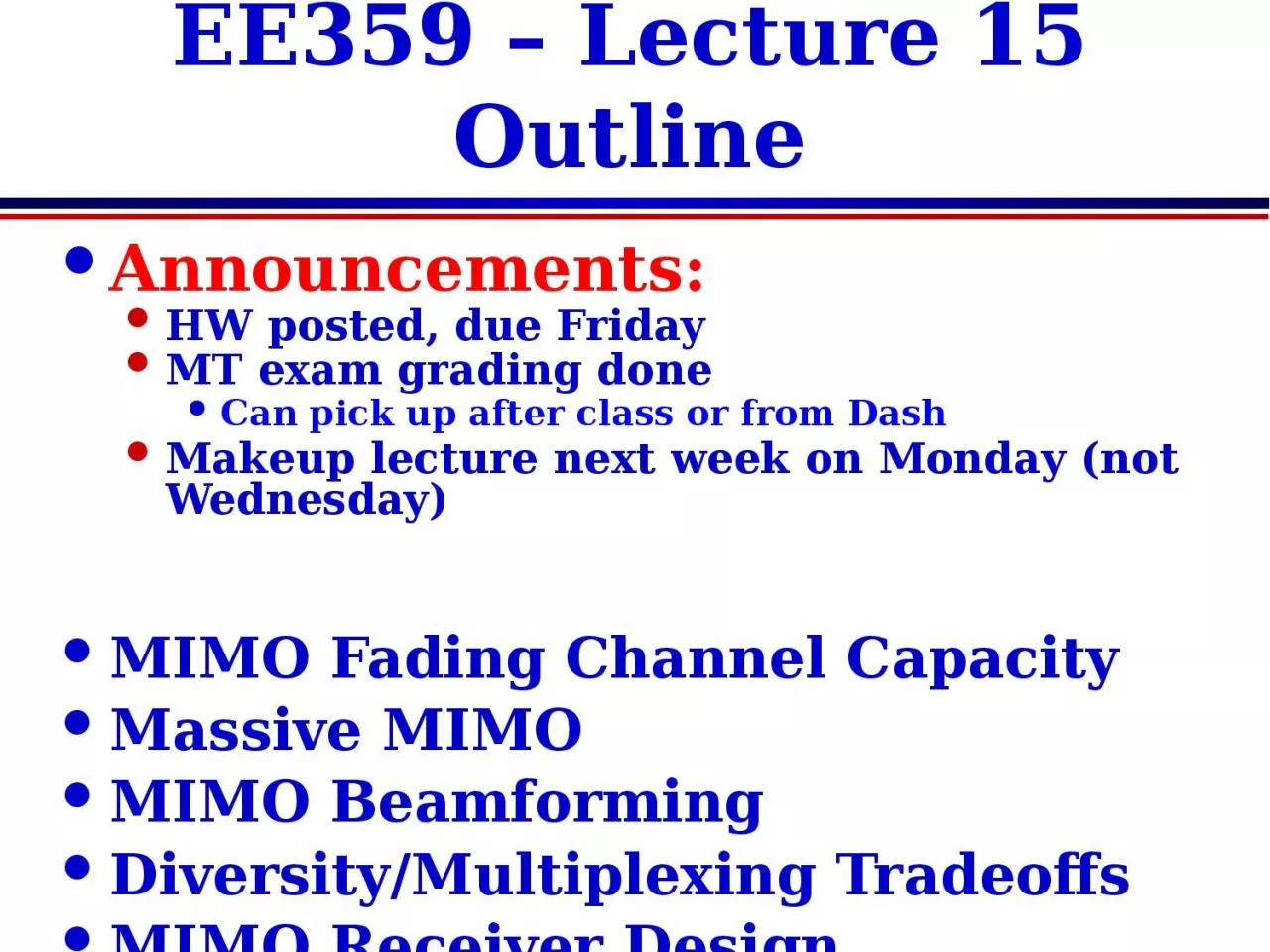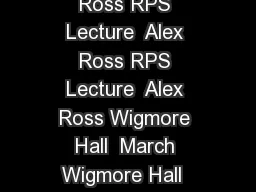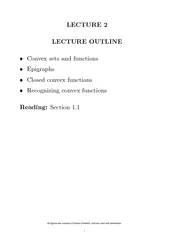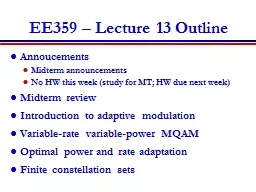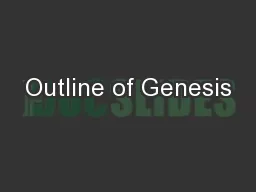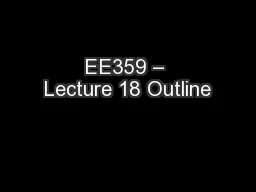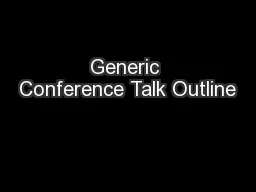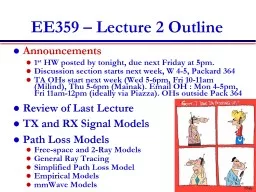PPT-EE359 Lecture 15 Outline
Author : sterialo | Published Date : 2020-08-28
Announcements HW posted due Friday MT exam grading done C an pick up after class or from Dash Makeup lecture next week on Monday not Wednesday MIMO Fading Channel
Presentation Embed Code
Download Presentation
Download Presentation The PPT/PDF document "EE359 Lecture 15 Outline" is the property of its rightful owner. Permission is granted to download and print the materials on this website for personal, non-commercial use only, and to display it on your personal computer provided you do not modify the materials and that you retain all copyright notices contained in the materials. By downloading content from our website, you accept the terms of this agreement.
EE359 Lecture 15 Outline: Transcript
Download Rules Of Document
"EE359 Lecture 15 Outline"The content belongs to its owner. You may download and print it for personal use, without modification, and keep all copyright notices. By downloading, you agree to these terms.
Related Documents

